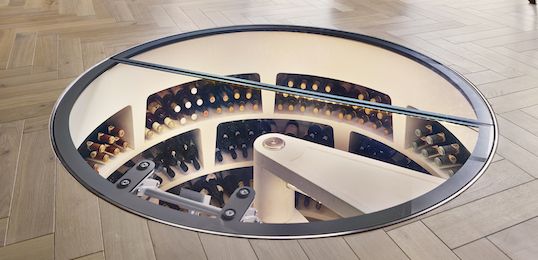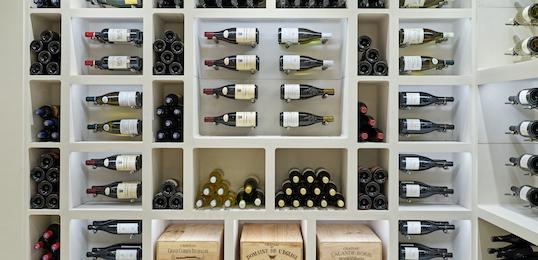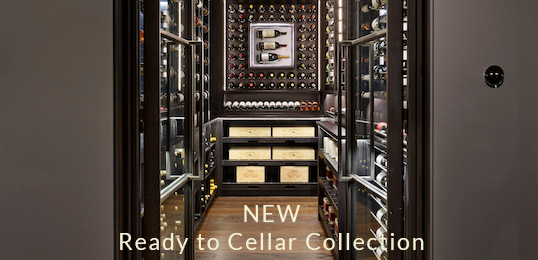2011 was touted as a disaster, but in fact, the top wines are very impressive indeed. This is not a 2009, nor indeed is it a 2010 vintage, but it is, to my mind, more exciting and more engaging than the 2008s. It was, however, heading for certain disaster in the middle of last year when many of the vignerons thought that it might be even hotter and more challenging than 2003, but it didn’t turn out that way. Interestingly the challenges were many and varied, but those outfits with skilled vineyard staff and deep pockets to pay for their overtime wages made extremely nice wines indeed. In order to understand the shape and size of these wines, it is necessary to track back to the beginning of the year. You will then see just how topsy-turvy the whole growing season the 2011 Bordeaux vintage was. Imagine a warm start and a warm finish, with a cool and rainy middle – very strange indeed.
After a cold, dry winter, spring was somehow leapfrogged when summer appeared to arrive early, in April! Budding was early and the growth cycle of the vines kicked off without any delay. Flowering was, accordingly, extremely early and the vines got into their stride some three weeks ahead of schedule in mid-May, in warm conditions. Warm, sunny and dry conditions prevailed and this put the vines under a degree of hydric stress – although those with deep roots still managed to find the water that they needed. The 26th and 27th June saw a heat spike of 40ºC, which caused heat damage on the most exposed berries, particularly on Cabernet Sauvignon. The most vigilant vineyard crews cut these berries out of the bunches – a time-consuming, fiddly and costly exercise. Veraison started early, too, at the beginning of July, but cooler weather and showers slowed it and restarted vegetative growth. Green harvests were necessary as the cool weather continued. August and the beginning of September were unusually inclement, but this seemed to make up for the water stress earlier in the season.
Hail struck on the 1st September in certain parts of Pauillac and St-Estèphe causing a lot of damage of some properties. Harvests started early at the end of August for the whites and the beginning of September for the reds. Château Margaux reported the lowest yields for twenty years on account of the heat problems. Sauternes were harvested from early September with some plots being picked with superb botrytis as late as early November, but botrytis threatened the reds, too, and high-tech sorting tables were used by the most skilled estates to eliminate any substandard berries.
The rigorous selection process undertaken by the most responsible Châteaux has resulted in low yields, but concentrated wines. Most of the top reds have high IPT ratings meaning that their polyphenols are high – leading to high tannin levels. The acidity is firm and the alcohol levels are back down from the highs of the richer 2009s and 2010s to a more manageable 13% (vol). So the upshot of this is that the wines are dark in colour, firmly tannic, loaded with bright, fresh acidity and yet not too heavy or ponderous in terms of alcohol. I like this sort of shape and size – it’s classic in every way. While not as dense and swaggering as the 2009s, nor as sexy and lissom as the 2010s, the top 2011s are very impressive, with a superb future ahead of them.
Alexandre Thienpont, of Vieux Château Certan, prefers his 2011 to both his 2009 and 2010 –declaring ‘this is a vintage for haute cuisine, not barbecue’. I didn’t mark highly wines with overt oak notes, where the wood seemed to overshadow the fruit, nor did I like wines that appeared forced, over-macerated or too tarry. There are a few too many wines which lacked balance and a lack of viticultural skill in coping with the challenging conditions and sloppy selecting on the sorting table is clearly responsible for this. There are no excuses whatsoever for this as these days these procedures are fundamental and well-known. In 2011 Châteaux should have been making energetic, classically shaped, cashmeretextured beauties – and many did just that. Dry whites are superb and Sauternes are amazing, too.
My favourite wines
(at any price)
Vieux-Château Certan (Pomerol) 19/20
Château Léoville-Las Cases,2ème Cru (Saint-Julien) 19/20
Château Pétrus (Pomerol) 19/20
Château Margaux, 1er Cru (Margaux) 19/20
Château Latour, 1er Cru (Pauillac) 19/20
Château d’Yquem, 1er Cru Supérieur (Sauternes) 19/20
Château Haut-Brion Blanc (Pessac-Léognan) 19/20
Château Cheval Blanc, Grand Cru Classé ‘A’ (Saint-Emilion) 18.5/20
Château Haut-Brion,1er Cru (Pessac-Léognan) 18.5/20
Château Lafite-Rothschild,1er Cru (Pauillac) 18.5/20
My favourite great value wines
(assuming prices are fair*)
Château Calon-Ségur, 3ème Cru (Saint-Estèphe) 18/20
Château Grand-Puy-Lacoste, 5ème Cru (Pauillac) 18/20
Château Saint-Pierre, 4ème Cru (Saint-Julien) 17.5/20
Château La Tour du Pin, Grand Cru Classé (Saint-Emilion) 17.5/20
Château Batailley, 5ème Cru (Pauillac) 17.5/20
Château D’Armailhac, 5ème Cru (Pauillac) 17.5/20
Château Durfort-Vivens, 2ème Cru (Margaux) 17.5/20
Château Laforge, Grand Cru (Saint-Emilion) 17.5/20
l’If (Saint-Emilion) 17.5/20
Château Lacoste-Borie, 2nd wine of Grand-Puy-Lacoste (Pauillac) 17/20
*at the time of writing (Easter 2012)


